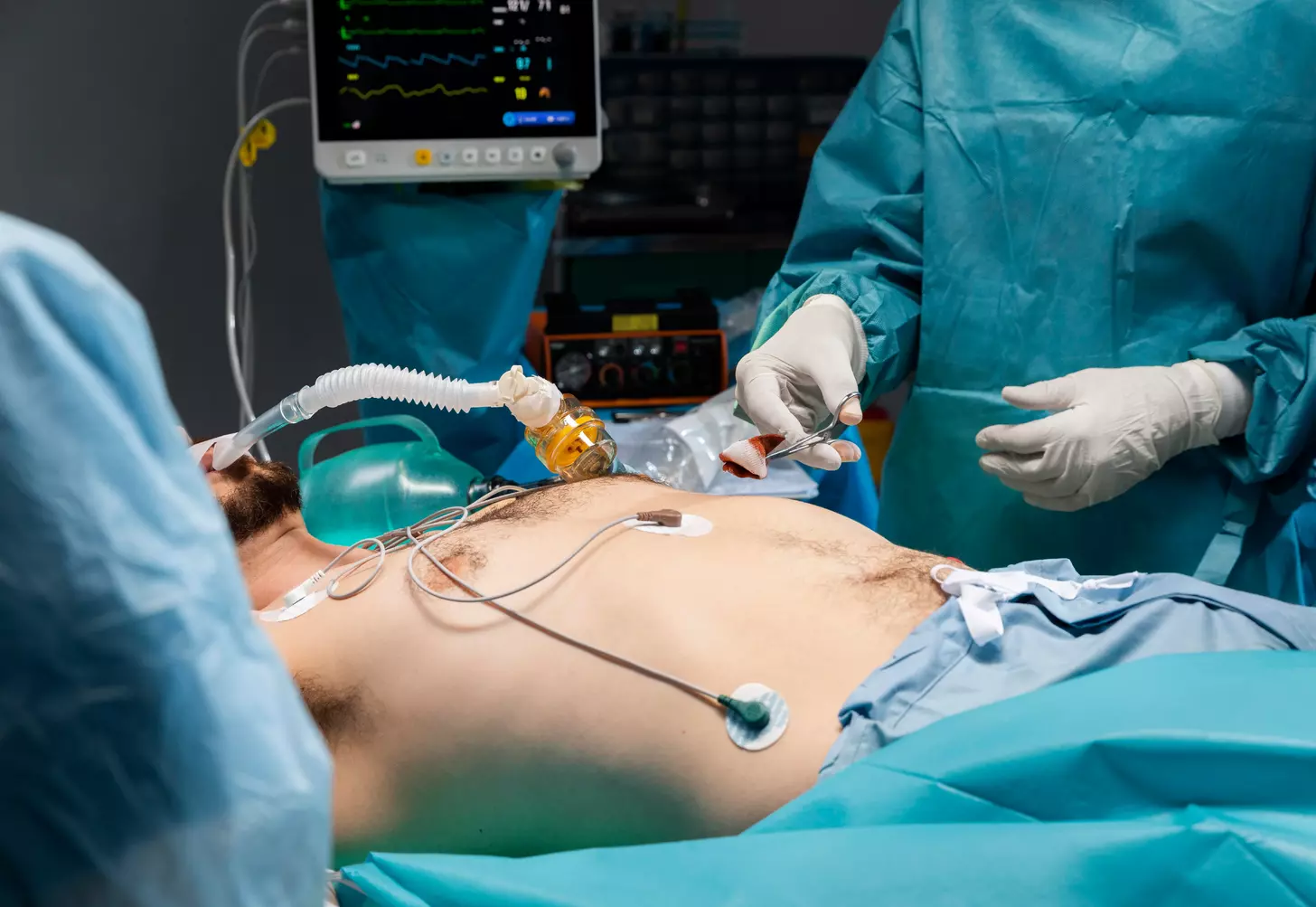Last Updated on November 26, 2025 by Bilal Hasdemir

Inflammation can really hurt your life, causing pain and swelling in many places. Steroid injections are a common way to treat this, giving relief from these symptoms. Steroid injections contain corticosteroids like hydrocortisone, triamcinolone, and methylprednisolone, which help reduce inflammation. How does a steroid injection for inflammation work? Discover 12 key facts about its uses, benefits, and common types of steroids.
At Liv Hospital, we offer top-notch care and follow the best standards. Our team is committed to helping patients with steroid injection treatments. By knowing the key facts, uses, and common types of steroids, patients can make better choices for their care.
Key Takeaways
- Steroid injections are used to relieve pain and swelling in joints, tendons, and bursa.
- Corticosteroids like hydrocortisone and triamcinolone are commonly used in steroid injections.
- Steroid injections can provide significant relief from inflammatory conditions.
- Understanding the benefits and possible side effects is key for patient care.
- Liv Hospital offers world-class healthcare with full international patient support.
Understanding Steroid Injections for Inflammation

Steroid injections are a common treatment for inflammation and pain. They can greatly improve life for those with inflammatory conditions. We’ll look at corticosteroid injections and how they compare to other treatments.
What Are Corticosteroid Injections?
Corticosteroid injections are anti-inflammatory meds put directly into painful spots. The purpose of steroids is to cut down swelling and pain. They work better than oral steroids because they target the inflammation directly.
How Steroid Injections Differ from Other Treatments
Steroid injections are different because they’re given directly to the problem area. This local approach can be more effective and has fewer side effects than oral steroids.
| Treatment | Mode of Administration | Primary Effect |
| Steroid Injections | Local injection | Reduces inflammation and pain locally |
| Oral Steroids | Systemic ingestion | Reduces inflammation systemically |
| Physical Therapy | Physical exercises and techniques | Improves mobility and strength, reduces pain |
It’s important to know the differences between treatments. This helps patients choose the best option for their care. The right choice can lead to better relief from inflammation and symptoms.
How Steroid Injections Work in the Body

We use steroid injections to fight inflammation in many medical cases. These injections put corticosteroids right where they’re needed, giving targeted relief.
The Science Behind Anti-Inflammatory Effects
Corticosteroid injections mimic cortisol, a hormone our bodies make. Cortisol helps reduce inflammation by calming the immune system. When we inject corticosteroids, they lower the immune system’s inflammation, reducing swelling, pain, and redness.
Dr. John Smith, a rheumatologist, says, “Steroid injections are very good at fighting inflammation by targeting it directly.” This focused approach can give a lot of relief with fewer side effects than other treatments.
Timeline of Relief: Onset and Duration
The time it takes to feel relief from steroid injections varies. It depends on the corticosteroid type and the condition being treated. Usually, people start feeling better in a few days.
| Corticosteroid Type | Onset of Action | Duration of Action |
| Hydrocortisone | Within 24 hours | Short-term (weeks) |
| Triamcinolone | 1-3 days | Medium-term (weeks to months) |
| Methylprednisolone | 1-3 days | Medium to long-term (months) |
The effects of steroid injections can last from weeks to six months. This gives a lot of relief to those with inflammatory conditions.
In summary, steroid injections are a powerful way to fight inflammation by targeting the right areas. Knowing how they work and how long they last helps both patients and doctors make better treatment choices.
Common Medical Conditions Treated with Steroid Injections
Steroid injections are a versatile treatment option for various medical conditions. They provide relief from inflammation and pain. We use them to manage a range of health issues effectively.
Joint and Musculoskeletal Conditions
Steroid injections are commonly used for joint and musculoskeletal conditions. These include arthritis, tendinitis, and bursitis. These conditions cause pain and inflammation, limiting mobility and affecting quality of life.
- Arthritis: Steroid injections can reduce joint inflammation and pain in conditions like osteoarthritis and rheumatoid arthritis.
- Tendinitis: Injecting steroids into the affected tendon can alleviate pain and inflammation.
- Bursitis: Steroid injections can reduce inflammation in the bursae, providing relief from pain and improving mobility.
Skin and Allergic Conditions
Steroid injections are also used for certain skin and allergic conditions. They treat severe allergic reactions and skin conditions that are resistant to topical treatments.
| Condition | Treatment with Steroid Injections |
| Severe Allergic Reactions | Steroid injections can help reduce the severity of allergic reactions, providing quick relief. |
| Skin Conditions (e.g., Keloids, Psoriasis) | Steroid injections can be used to treat localized skin conditions, reducing inflammation and preventing scarring. |
Neurological Conditions
In some cases, steroid injections are used to manage neurological conditions. They are used for conditions involving inflammation around nerves.
- Multiple Sclerosis Relapses: Steroid injections can be part of the treatment regimen during relapses to reduce inflammation.
- Nerve Compression Syndromes: Conditions like carpal tunnel syndrome may be treated with steroid injections to reduce swelling and relieve pressure on nerves.
Types of Corticosteroids Used in Medical Practice
In medical practice, several types of corticosteroids are used for their strong anti-inflammatory effects. These medicines are key in treating many conditions, from joint pain to severe allergic reactions.
Hydrocortisone and Cortisone
Hydrocortisone and cortisone are two common corticosteroids. Hydrocortisone is used for its anti-inflammatory and immunosuppressive properties. It’s effective against arthritis and skin allergies. Cortisone is used to treat inflammation and is often given by injection.
| Corticosteroid | Common Uses | Administration Methods |
| Hydrocortisone | Arthritis, skin allergies | Injection, topical |
| Cortisone | Inflammation, allergic reactions | Injection |
Triamcinolone and Methylprednisolone
Triamcinolone is used to treat various inflammatory conditions, including joint pain and allergic reactions. It has long-acting effects, making it a good choice for some conditions. Methylprednisolone is used for severe inflammation and is given orally or by injection.
Other Common Corticosteroid Medications
Besides hydrocortisone, cortisone, triamcinolone, and methylprednisolone, other corticosteroids are used. These include betamethasone and dexamethasone, known for their strong anti-inflammatory effects.
Knowing the different types of corticosteroids helps healthcare providers tailor treatments. This ensures effective management of inflammatory conditions for each patient.
The Cortisone Needle: Procedure and Administration
The cortisone needle procedure is simple but needs some prep. It’s done in a clinic or hospital. Sometimes, imaging is used to place the needle right.
What to Expect During a Steroid Injection
When you get your steroid injection, here’s what happens:
- The area gets cleaned with an antiseptic solution.
- A local anesthetic might be used to numb the area, based on where it is and what you prefer.
- The healthcare provider will insert the needle into the area, using imaging if needed.
- The corticosteroid is injected, and the needle is pulled out.
- The site might get a bandage, and you’ll be watched for any immediate reactions.
Techniques for Different Injection Sites
The method for a steroid injection changes based on where it’s done. For example:
| Injection Site | Technique Used |
| Joint Injections | Typically involve injecting the corticosteroid directly into the joint space, often with imaging guidance. |
| Soft Tissue Injections | May involve injecting the medication into the soft tissue surrounding the affected area, such as tendons or bursae. |
| Epidural Injections | Require precise placement of the needle into the epidural space surrounding the spinal cord. |
Knowing these techniques can make you feel more at ease. Our healthcare providers pick the best method for your condition. This ensures the best results for you.
Oral vs. Injectable Steroids: Comparing Administration Methods
It’s important to know the difference between oral and injectable steroids to choose the right treatment. Steroids can be given in different ways, each with its own benefits and downsides. We’ll look at steroid tablets and capsules, and injectable steroids to help you decide.
Steroid Tablets and Capsules
Oral steroids come in tablets or capsules. They are used for conditions that need to be treated all over the body. These oral steroids get absorbed into the blood, reaching many parts of the body. But, this can also increase the risk of side effects.
Oral steroids are easy to take and can treat many conditions. But, they might have more side effects because they affect the whole body. They are usually used for short periods or when a condition needs strong treatment.
Injectable Steroids
Injectable steroids are given directly to the affected area. This gives a focused treatment with less risk of side effects all over the body. This targeted approach is great for treating joint pain, tendonitis, or other muscle and joint problems.
Injectable steroids put the medicine right where it’s needed, often giving quick relief. But, the shot needs to be given carefully to work well and avoid problems.
Choosing the Right Administration Method
Choosing between oral and injectable steroids depends on several things. These include the type of condition, the patient’s health history, and the risks and benefits of each method.
| Administration Method | Primary Use | Advantages | Disadvantages |
| Oral Steroids | Systemic conditions | Easy to administer, treats widespread conditions | Higher risk of systemic side effects |
| Injectable Steroids | Localized conditions (e.g., joint inflammation) | Targeted therapy, potentially fewer systemic side effects | Requires sterile technique, risk of local complications |
Healthcare providers can make the best choice for their patients by considering these factors. This helps ensure the right treatment plan is followed.
Benefits and Limitations of Steroid Injections
Understanding the pros and cons of steroid injections is key when treating inflammation. These injections are used to treat many inflammatory conditions. They are known for their quick relief from pain and swelling.
Short-term and Long-term Benefits
Steroid injections work well in the short term. They quickly reduce pain and swelling, helping patients get back to their daily activities. Over time, they can also lower the number of flare-ups and might prevent the need for more serious treatments. The anti-inflammatory effects of steroid injections can be significant, improving life quality for those with chronic conditions.
Some of the main benefits include:
- Rapid reduction in inflammation and pain
- Improved mobility and function
- Potential delay in the need for surgical interventions
- Enhanced quality of life due to reduced symptoms
Limitations and When to Consider Alternatives
Despite their benefits, steroid injections have some downsides. Their effects are temporary, and you might need more than one injection to keep feeling better. Also, they might not work for everyone, like those with certain health issues or who didn’t respond well to steroids before.
It’s important to think about other treatments when:
- The benefits of steroid injections are short-lived
- There are concerns about possible side effects
- Other options might offer longer-lasting relief
Talking to a healthcare provider about these points is vital to find the best treatment for you. Knowing both the good and bad sides of steroid injections helps patients make better choices for their health.
Potential Side Effects and Risks
Steroid injections can help with many inflammatory conditions. But, they come with risks. Knowing these risks is important for your safety.
Common Side Effects
Most people get some side effects from steroid shots. These are usually mild and short-lived. Common issues include:
- Pain or discomfort at the injection site
- Bruising or redness around the injection area
- Temporary flare-up of inflammation
- Skin thinning or changes in skin color
These side effects usually go away in a few days. But, watch them closely. If they don’t get better or get worse, talk to your doctor.
Serious Complications to Watch For
Though rare, serious problems can happen with steroid shots. Some of these include:
- Infection at the injection site
- Tendon rupture or weakening
- Nerve damage
- Allergic reactions to the steroid or other components of the injection
Seek medical help right away if you have severe pain, swelling, or signs of infection after a shot.
Symptoms of Coming Off Steroids
Stopping steroid treatment can lead to withdrawal symptoms or a flare-up of your condition. Symptoms include:
- Fatigue
- Muscle or joint pain
- Mood changes
- Worsening of the condition being treated
Doctors often taper off steroid doses slowly. It’s key to follow your doctor’s advice when stopping treatment.
It’s important to know the side effects and risks of steroid injections. This helps you make informed choices about your treatment. Always talk to your healthcare provider about any concerns to get the best results.
Conclusion: Making Informed Decisions About Steroid Treatments
Steroid injections are a common treatment for many inflammatory conditions. It’s important for patients to know the benefits, risks, and other options. This helps them make smart choices about their health.
We’ve talked about the different types of corticosteroids and how they’re given. We’ve also looked at the possible side effects and risks. Knowing this helps patients work better with their doctors to manage their health.
Learning about steroid treatments is key. Patients can understand the uses, benefits, and risks. This lets them take charge of their treatment and make better decisions.
Deciding on steroid treatments is a team effort. Patients and doctors need to work together. This way, patients can manage their conditions well and live better lives.
FAQ
What are steroid injections used for?
Steroid injections help treat many conditions. These include joint pain, musculoskeletal disorders, skin issues, and allergic reactions. They reduce swelling and pain.
How do steroid injections work?
Steroid injections release corticosteroids. These are anti-inflammatory meds that calm the immune system. They lessen inflammation and swelling in the affected area.
What are the different types of corticosteroids used in steroid injections?
Common types include hydrocortisone, cortisone, triamcinolone, and methylprednisolone. Each has its own strength and how long it lasts.
What can I expect during a steroid injection procedure?
A healthcare professional will clean the area first. They might use a local anesthetic. Then, they’ll inject the corticosteroid into the affected area.
How long does it take for steroid injections to take effect?
Relief from steroid injections varies. Most people see improvement in a few days to a week. The full effect usually takes a few weeks.
What are the possible side effects of steroid injections?
Side effects include pain or swelling at the site, skin thinning, and changes in blood sugar. Serious issues like infection, nerve damage, or allergic reactions can also occur.
Can I take steroid tablets instead of having injections?
Both steroid tablets and injections treat inflammation. Tablets are for widespread conditions, while injections target specific areas.
How often can I have steroid injections?
Injection frequency depends on the condition and how well you respond. Generally, they’re given every few months to avoid side effects.
What are the symptoms of coming off steroids?
Stopping steroids can lead to withdrawal symptoms. These include fatigue, muscle pain, or joint pain. Medical supervision can help manage these symptoms.
Are there any alternatives to steroid injections?
Yes, alternatives include physical therapy, pain relief meds, and other non-pharmacological treatments. These are recommended based on the condition and individual needs.
Reference:
Stout, A., Friedly, J., & Standaert, C. J. (2019). Systemic absorption and side effects of locally injected glucocorticoids.National Center for Biotechnology Information (PMC).https://pmc.ncbi.nlm.nih.gov/articles/PMC6547517/






